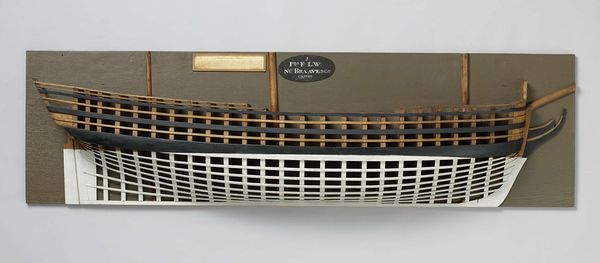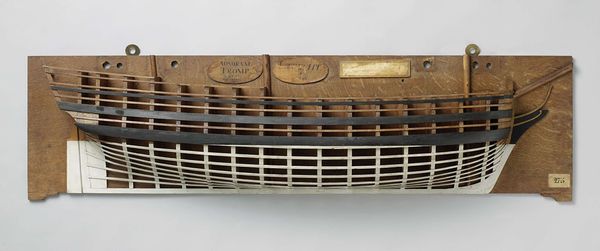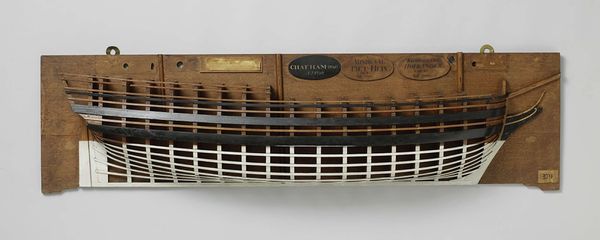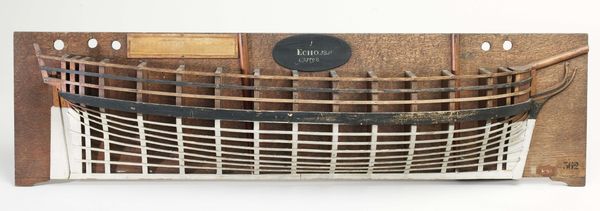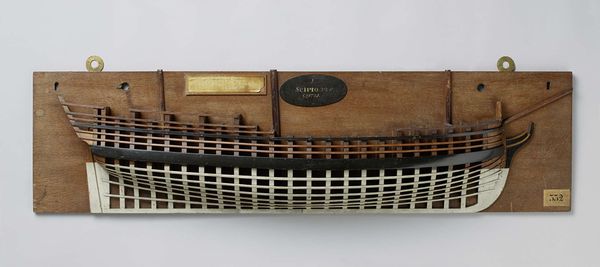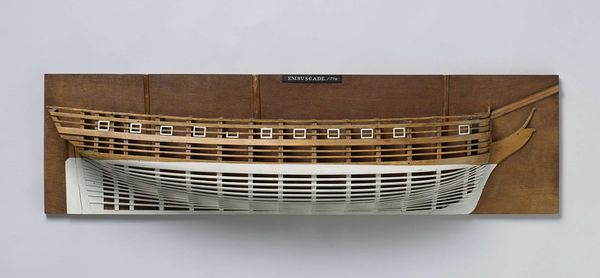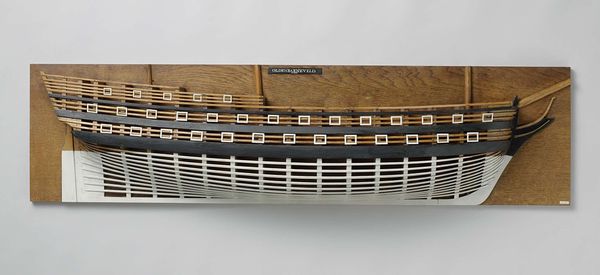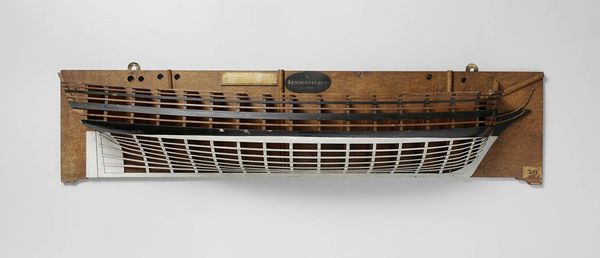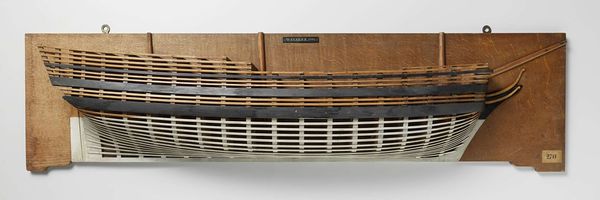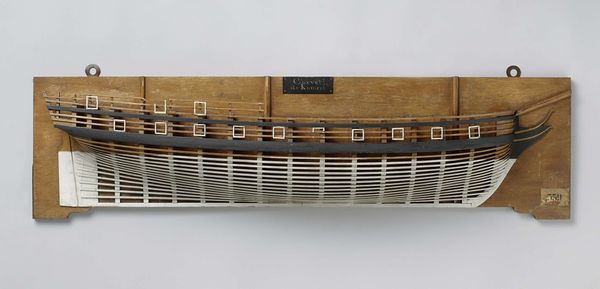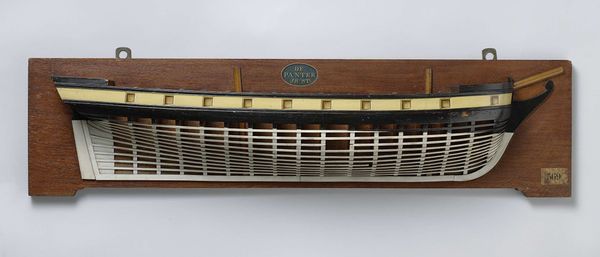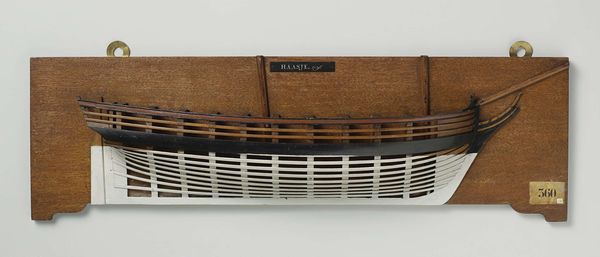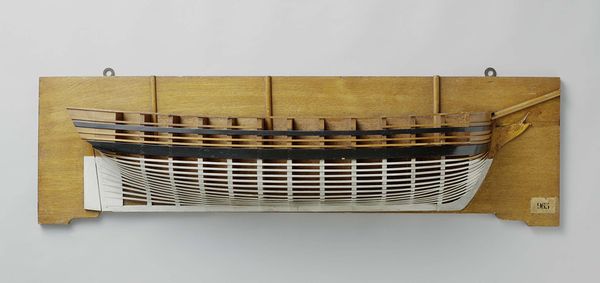
wood, architecture
#
architecture model
#
wood
#
cutout
#
architecture
Dimensions: height 34.5 cm, width 109.8 cm, depth 14.5 cm
Copyright: Rijks Museum: Open Domain
Curator: This intriguing piece is a half model of a 24-gun frigate, crafted around 1796. Notice its elegant lines and the way it seems to slice through the space. Editor: Yes, there's a tension between fragility and potential might. The rigid structure overlaid with delicate latticework gives the impression of both control and vulnerability, doesn’t it? Immediately, I wonder about naval power during the late 18th century, and whose labor constructed it. Curator: It's fascinating how this "cutout," if you will, focuses on the hull's form, essentially abstracting the ship’s function into pure shape. Look at how the craftsman employed a range of linear elements; note how the wood’s grain subtly plays against them. Editor: I can't help but see it as a symbol of maritime dominance—but also exploitation. The construction of these vessels demanded enormous resources, impacting global trade and, of course, fueling the brutal realities of colonialism. The materials—likely sourced from colonized lands, processed with exploited labor. We must acknowledge its connection to the slave trade routes. Curator: Undeniably. But consider also how meticulously each element has been calibrated, the repetition of ribs creating visual rhythm, with only the barest reference to sails, masts, or cannon. Focus instead on how elegantly this unknown model-maker simplified something grand and intricate. The dark upper hull juxtaposes brilliantly against the crisp white below the waterline. Editor: While those elements speak to aesthetic choices, the absence of figures perhaps speaks volumes. Who crewed these ships? What of the naval hierarchy reflected by these very structures? There is no space given for individual narratives—rather an austere testament to institutional power. This calls out the forgotten bodies—colonized, enslaved, or lower-ranked mariners. Curator: Certainly. It becomes a meditation on both possibility and restraint. The object can be seen as incomplete in form yet paradoxically precise, almost mathematically rigorous. We contemplate what is and isn’t. Editor: Agreed. Looking through a contemporary lens, this model provokes reflection about not only design innovation, but forgotten or silenced narratives. It represents the complex interplay of craft, global power structures, and the lives intertwined. Curator: Indeed. Thank you for contextualizing in the broader context!
Comments
No comments
Be the first to comment and join the conversation on the ultimate creative platform.
